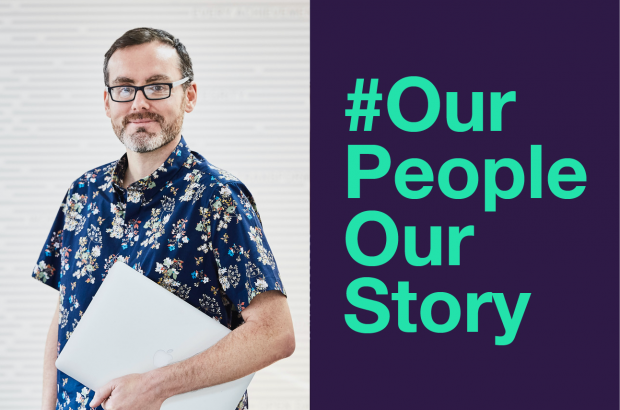My (awesome) team of interaction and content designers is responsible for the user experience of our digital services, ensuring users can do what they need to do with the minimum of fuss.
A big part of our work is accessibility – this blog post won’t explain what accessibility is, but you’ve read my other blog post, right? Watch this video for a refresher, GDS: What does accessibility mean? (video 2m18s).
Recent government regulations around accessibility have come into effect, and in this post, I’ll tell you more about them and what we’re doing at Companies House to ensure that we not only adhere to these regulations, but also how we work with our users to develop systems that they trust and value.

About the regulations
The accessibility regulations aim to help make sure online public services are accessible to all users, including disabled people. To meet the regulations, public sector organisations such as Companies House need to ensure their services meet a standard, by a few key dates.
The Web Content Accessibility Guidelines (known as WCAG 2.1), are an internationally recognised set of recommendations for improving web accessibility.
The actual WCAG specifications are quite technical, but if you want an overview then GDS (the Government Digital Service) has written a brief summary of some key WCAG 2.1 points.
Services needed to meet the standard by various dates, depending on when they were launched. All services needed to be accessible by 23 September 2020 (with some exceptions).
Not meeting the regulations
One question I’m often asked is - what would happen if we did not meet the regulations?
Well first and foremost, if our services were not accessible then many of our users would not be able to use our services, as 1 in 5 people in the UK has a disability.
Given one of our corporate strategic goals for the next 5 years is to provide brilliant services for customers that are digital-first, accessible and easy to use, inaccessible services would lead to problems, a potential increase in customer complaints, and the obvious reputational damage that comes with that.
In addition, inaccessible services will fail government service standard assessments, resulting in increased time and money spent on projects, as the services must be reworked and reassessed.
Finally, inaccessible services could be subject to legal action under the Equality Act 2010 and the Disability Discrimination Act 1995.
GDS monitors public sector bodies’ compliance on behalf of the Minister for the Cabinet Office. GDS does this by examining a sample of public sector websites every year.
Working (hard) to meet the regulations
So, what have we been doing to ensure we meet the accessibility regulations and ensure that our brilliant services continue to deliver a great customer experience? In short, a lot.
The first thing we did was find out how accessible our services currently were. We have a lot of services, some new and some (very) old. To find out how accessible services were, we did 3 things:
- Audited them internally. We do this in a number of ways, some manual testing, some browser-based testing. Using a variety of tools gives us a good overview of any issues. We then prioritise and fix these issues.
- Audited them externally. As well as meeting these accessibility regulations, our services also need to meet the GDS Service Standard (we have a lot of standards to adhere to!). Accessibility is part of the Service Standard, and GDS expects us to have our services audited by a specialist accessibility agency. The agency does a very detailed analysis of a service and then provides a report of any issues. The good news is, the reports we’re getting back now contain fewer and fewer issues when compared to a few years ago – we’re designing and building more accessible services, and we’re getting better at detecting these potential issues before they go for external audit.
- Tested with real users. Our user research team test our services with the people who actually use our services, including users with disabilities. In recent months of course this has been happening remotely. I cannot emphasise how important this testing is. All the audits and internal tests in the world are no match for testing with actual users. If it wasn’t for the excellent work our user research team does, my team would not be able to do their job. If you would like to get involved in this user testing, consider joining the Companies House user panel!
So, once we’d determined how accessible our services were, we needed to do 2 things:
- Put a plan in place to fix any issues. Ideally these fixes would all be in place before regulations came into effect (September 2020). If not, we’d need to specify when they would be in place.
- Publish an accessibility statement for each service. You’ll find these in the footer of our services (and other services across government). These statements give users information such as how accessible the service is, who users can contact to report issues, and how the service was tested (or audited).
In my next blog post, I’ll cover how accessible our services are, and what else we are doing in Companies House to promote accessibility and ensure we continue to deliver a brilliant service for customers.
Our 5-year strategy details a new vision for Companies House and outlines our commitment to driving confidence in the UK economy.
Read more about how we’re helping to make the UK the best place to start and run a business.
